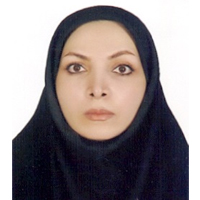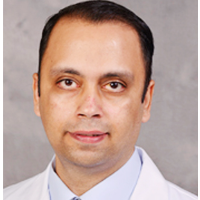Intraepidermal Injections of Autologous Epidermal Cell Suspension: A new promising approach to Dermatological Disorders. Preliminary Study
Published on: 7th December, 2017
OCLC Number/Unique Identifier: 7317627578
Regenerative medicine is a modern approach of dermatological treatment, using Epidermal Cells of the interfollicular epidermis (ESCs) for their effect in skin regeneration in chronic ulcers and burns, melanoma, vitiligo, junctional epidermolysis bullosa. Intraepidermal injections of autologous epidermal cell suspension can be a new and very promising treatment for many other cutaneous disorders as non-scarring alopecia (Alopecia Areata, Androgenic Alopecia) or scarring alopecia (Lichern Plano Pilaris alopecia, Discoid Lupus Erithematosus alopecia), anti-aging therapies. The intraepidermal injection of an autologous epidermal cell suspension is a simple, fast and safe surgical procedure: a small, thin portion of the epidermis of the patient undergoes a treatment where a suspension with all the cells collected from the epidermis and cultured for 7 days is injected into the skin. Our preliminary study shows that a suspension contains a significant number of viable cells that survive at day 7 in culture.
Our research is ongoing and is focusing on the typing of the different cells in the suspension and evaluation of the presence and the nature of stem cells.
Effectiveness of ethinyl oestradiol /cyproterone acetate and ethinyl oestradiol/ desogestrel with or without low-dose metformin on perceived health-related quality of life in hirsute women with polycystic ovary disease: A randomised, double-blind, placebo-controlled study
Published on: 6th August, 2019
Background: Polycystic ovary disease (PCOD) is an endocrine disorder. It leads to menstrual disturbances, infertility, obesity and dermatological manifestations such as hirsutism and acne which leads to impaired health-related quality of life (QOL).
Aims: To evaluate the perceived health related QOL in patients with PCOD treated with ethinyl oestradiol (35µg)/cyproterone acetate (2 mg) (EE/CPA) and ethinyl oestradiol (20 µg)/ desogestrel (0.15mg) (EE/DES) alone and in combination with low-dose metformin.
Methods: A total of 117 patients with PCOD diagnosed according to Rotterdam Consensus Criteria 2003 with a hirsutism score of 8 or more according to modified Ferriman-Gallway Score (mFGS) were randomised to receive one of four drug combinations (arm A – EE/CPA, arm B- EE/DES, arm C- EE/CPA plus metformin, arm D- EE/DES plus metformin). The outcomes assessed were body mass index (BMI), hirsutism (using mFGS) and health-related QOL (Polycystic Ovary Syndrome Health- Related quality of life Questionnaire (PCOSQ) and a Visual Analog Scale (VAS) score) at baseline and 12 months after treatment.
Results: PCOSQ score in relation to the hirsutism, emotions, menstruation, obesity, infertility and VAS score in relation to hirsutism and obesity had improved at the end of 12 months (p< 0.001) in all treatment arms. There was no difference between treatment arms in all measured outcomes at baseline and at the end of 12 months.
Conclusion: Treatment with EE/CPA and EE/DES is associated with an improvement in perceived QOL in patients with PCOD. The addition of low-dose metformin did not have a significant benefit.
Bee venom: a case of effectiveness on skin varicosities veins with review of its dermatological benefits
Published on: 21st May, 2020
OCLC Number/Unique Identifier: 8870468269
Bee venom is a very rich and varied biochemical complex, which explains the multitude of its physiological effects as well as its medical indications. In dermatology, apart from psoriasis, few studies have been conducted concerning its interest and effectiveness; however the preliminary results remain so promising and encouraging. We present a clinical case illustrating the efficacy of bee venom in cutaneous varicosities, with a review of the literature of its main dermatological indications.
Artemisia Naphta: A novel oil extract for sensitive and acne prone skin
Published on: 15th June, 2021
OCLC Number/Unique Identifier: 9124793207
Background: The plant Artemisia annua has been used in traditional Chinese medicine for many years. Rich in bioactive molecules, the A. annua plant is used to extract the anti-malaria compound artemisinin (< 1%), which results in most of the plant being unutilized. One byproduct of artemisinin extraction is artemisia naphtha (AN), which has yet to be studied extensively.
Aims: Study the activity of a novel AN oil extract against microbes, pro-inflammatory cytokines, and dermatological endpoints that are key for eczema and acne pathogenesis to determine if an effective A. annua extract for these skin conditions can be developed.
Methods: Gas chromatography-mass spectrometry was performed to determine the composition of AN oil. P. acnes, S. aureus, M. furfur, and C. albicans were cultured to determine minimal inhibitory concentration. in vitro studies utilizing keratinocytes and macrophages were treated with AN oil and gene expression measured by quantitative RT-PCR. A 13-subject clinical trial was performed with 1% AN oil Gel to assess its potential benefits for sensitive and acne prone skin.
Results: AN oil upregulates filaggrin gene expression and possesses antimicrobial and anti-inflammatory activity inhibiting LPS, S. aureus and "Th2 induced" pro-inflammatory mediator release (IL-6, IL-8 and TSLP). Clinical assessment of 1% AN Gel shows it reduces acne blemishes and the appearance of redness.
Conclusion: Previously an underutilized and unpurified byproduct, AN is now the source to develop the first topical AN oil for cosmetic use with an activity profile that suggests it is effective for those with sensitive and/or acne prone skin.
The dermatologic manifestations of COVID-19: a mini-review
Published on: 27th August, 2021
OCLC Number/Unique Identifier: 9244773760
Severe acute respiratory syndrome coronavirus 2 (SARS-CoV-2), was identified in Wuhan, China, and caused coronavirus disease-19 (COVID-19), which is still a global pandemic. Dermatologic manifestations have increasingly been identified as significant extrapulmonary manifestations of COVID-19. The dermatologic manifestations associated with COVID-19 infection reported to date include maculopapular rash, vesicular lesions, urticaria-like lesions, and chilblain-like lesions. Knowledge of dermatologic manifestations of COVID-19 may be essential for early diagnosis and a better prognosis in COVID-19 patients. This review summarizes the current understanding of common COVID-19-associated dermatologic manifestations.
A Genetic study in assisted reproduction and the risk of congenital anomalies
Published on: 12th October, 2021
OCLC Number/Unique Identifier: 9305465911
In vitro fertilization is one of the most common and effective procedure for thousands of couples worldwide who want to have a child and are unable to do so for various reasons. Diverse studies show that couples who conceive naturally after one year of trying had newborns with an increased risk of prematurity and low birth weight, compared with couples who conceived before completing one year of trying. Children from assisted reproduction (AR), have a 30% increased risk of prematurity and low birth weight, compared with children from infertile fathers. Regarding the conflicting results the present study aimed to record the frequency of genetic, congenital anomalies in children and adolescents who had examined in the last decade to the Clinical Genetics Clinic of the National and Kapodistrian University of Athens whose mothers had undergone assisted reproduction. The research process was conducted at the "Aghia Sofia" Children's Hospital based in Athens. However, the cases that were studied came from all over Greece. Initially, the researcher recorded the cases that came to the clinic of Clinical Genetics and whose conception occurred after technical assisted reproduction. After telephone communication and the consent of the parents, a live appointment was scheduled. In this meeting-interview all the provisions of the investigation and the protocol were asked and some elements of the medical history of the cases were confirmed. The total sample included 230 children and adolescents. The resulting data were recorded on a printed form/questionnaire. Then, they were registered electronically in the program SPSS 25.0 (Statistical Package for Social Sciences) with a specific unit code for each case/patient, followed by the processing and statistical analysis of the data as well as the recording of the results. The gender of the participants was male for 118 participants (51.3%) and 112 females (48.7%). Mean and standard deviation (SD) of maternal, paternal (at the time of delivery) age was equal to 36.38 (5.94) and 39.94 (6.58) respectively. The observed abdormalities were 35.53% psychomotor retardation, 23.68% facial abnormalities, 23.68% spinal cord abnormalities, 21.05% morphological abnormalities, 20.61% short stature, 19.74% developmental disorders, 19.30% heart disease, 16.67% neurological diseases, 14.47% genetic syndromes, 11.40% genital abnormalities, 8.33% limb abnormalities, 7.46% dermatological abnormalities, 6.14% eye abnormalities, 6.14% hypothyroidism, 5.70% endocrine disorders, 5.26%otolaryngology abnormalities, 2.63% disease of kidney, intestine, 2.19% vascular malformations. Regarding the karyotype chromosome analysis by G-banding technique, from the 230 children in: 24 (10.43%) a pathological result was found, in 158 children (68.70%) it was found normal (46, XX or 46, XY by case) without other findings, while in 48 children (20.87%) the test was not performed for various reasons. Regarding the results of molecular analysis (DNA) from the 230 children, in 50 (21.74%) a pathological finding was found, in 56 children (24.35%) no abnormalities were found and in 124 children (53.91%) no molecular analysis was performed for various reasons. In conclusion, the sample of this descriptive study is characterized as uniform in terms of the method of assisted reproduction since 96.24% had followed the classic IVF. Full-term pregnancy was associated with the appearance of malignancy and head morphological abnormalities (64.6%), normal pregnancy was associated with genetic syndromes (18.2%) and facial abnormalities (11.1%). It is recommended the screening oocyte and sperm donors in order to help protect the safety and health of donors, recipients, and future offspring. The present study confirms the association of the presence of congenital anomalies after in vitro fertilization (IVF). However, the absolute risk of developing severe dysplasias after an IVF procedure is limited.
An Urticaria Closet Simulating Leprosy in A 36-Year-Old Woman
Published on: 24th June, 2023
Urticaria corresponds to a papular edematous pruriginous fleeting rash on the skin whose cause is most often allergic (food, medicines, insect bites, etc.).Its management is often difficult because of its significant impact on quality of life. Its prevalence is estimated at 0.6% - 1.3% of the general population. Leprosy is a chronic infectious disease caused by Mycobacterium leprae (M. leprae) or Hansen’s bacillus (BH). Considered as the great simulator leprosy can pose a diagnostic problem with many other dermatological pathologies. This is a 36-year-old patient with a history of chronic urticaria treated with Loratadine 10 mg who consulted the Bamako Dermatology Hospital for a large erythematous cupboard, oedematous fixed on the buttocks evolving for more than 3 days. The interrogation found the notion of pruritus, hives, and physical examination, showed large erythematous plaques, edematous very limited, dark red color, and slightly copper resembling the closet infiltrated by leprosy. The pruriginous nature of the lesions and the absence of other cardinal signs of leprosy allowed us to make the diagnosis of chronic urticaria.
Case Report of Gardner-Diamond Syndrome
Published on: 25th July, 2023
Gardner-Diamond syndrome or psychogenic purpura is a rare vasculopathy disorder characterized by spontaneous painful purpuric rash without a history of trauma or antiplatelet or anticoagulant therapy. It occurs in women with mental health disorders. Gardner and Diamond in 1955 described a syndrome of auto erythrocyte sensitization which presented in abnormal crops of painful inflammatory ecchymosis in 4 patients at the site of trauma followed by progressive erythema and edema.
We present a 52-year-old age woman who was admitted to the internal medicine department and referred for dermatological consultation for recurrent spontaneous purpuric eruptions. The patient was under treatment for depression for many months. Her investigations and coagulation profile were nearly within normal.
Genital Condyloma in a 2-Year-Old Child Secondary to Circumcision: A Case Report
Published on: 10th January, 2024
Accumulated condylomas are exophytic tumors with a warty and hyperkeratosic surface due to the Human papillomavirus (HPV). Its prevalence in children is difficult to estimate due to limitations in epidemiological data. Its recurrent character is found in 30% of patients. Its management is very complex in children because of skin fragility. Circumcision is an operation consisting of the removal of part of the foreskin. This practice is done either with a simple knife or a pair of non-aseptic scissors which can be a source of contamination including HPV (Condyloma). Traditional circumcision does not seem to be reported in the literature as a mode of contamination. We report a case of genital condyloma in a child 2 years after circumcision. This is a 2-year-old male with no medical history but with a surgical history of circumcision that was brought by his parents in dermatological consultation for papular lesions accumulated on the penis. At the interrogation, we found the notion of recent circumcision performed by a tradithérapeute. The physical examination finds a good general condition. Dermatological examination reveals on the glans of multiple papules, exophitic, with warty and hyperkeratotic surface, of normal skin color. Furthermore, the physical examination of both parents was normal. The diagnosis of accumulated condyloma secondary to probable circumcision was retained before the clinical appearance of the lesions. Two electrocoagulation sessions spaced one month apart under local anesthesia were the treatment with a favorable evolution.
Severe Atopic Dermatitis Treated by Wet Wrapping: An Observation at the Dermatology Hospital of Bamako (Mali)
Published on: 25th June, 2024
Introduction: Wet wrapping is a local care technique adapted to the treatment of severe forms of eczema. It is a good alternative for AD resistant to the usual local treatments. We report a case. Observation: A 5-month-old infant, with a personal history of allergic rhinitis has been seen in a dermatological for diffuse skin eruption and pruritus evolving in flare-ups since 4 months, without improvement after several courses of dermocorticoids, anti-H1, and emollient from several doctors. Clinical examination revealed erythematous plaques surmounted by vesicles with a crumbled border located on the convexities and extension face of the limbs and in the folds behind the ears and diffuse skin xerosis. The examination of the other devices was unremarkable. The evaluated SCORAD was 59.8. We carried out the treatment by the wet wrapping technique, a clear regression of the cutaneous lesions and pruritus with the decrease of the SCORAD from 59.8 to 8.8 in 1 month of treatment. Discussion: This observation further illustrates the effectiveness of the Wet wrapping technique in the management of recalcitrant atopic dermatitis. In resource-poor countries, Wet wrapping may be an alternative for recalcitrant forms of atopic dermatitis. For fostering critical nurse observation as a source of research topics, we propose four strategies. First, cultivating awareness through a culture of evidence-based practice and critical reflection on common practice. Second, stimulating persistence in addressing moral dilemmas concerning better care despite resistance. Third, facilitating interprofessional learning in an open culture, where diverse perspectives are valued, and it is psychologically safe to bring them in. Fourth, overcoming funding disparities and facilitating nurse-led research, acknowledging the underrepresentation of nurses in funding agencies. These measures aim to empower nurses to observe critically, use their unique perspectives, and bring in research topics.
















